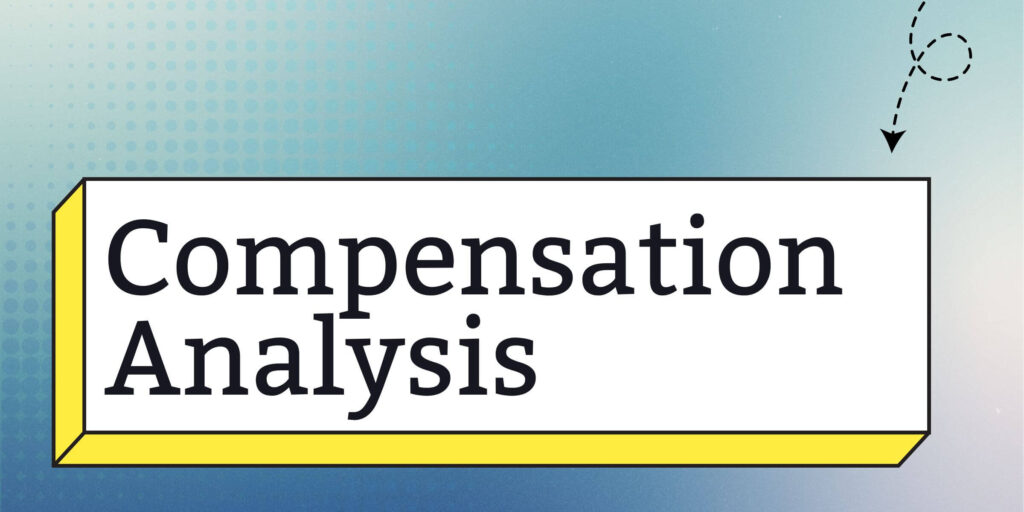Reducing sales ramp time is crucial for getting new sales reps productive and driving revenue quickly. This article will teach you how to optimize your sales ramp process through effective onboarding, leveraging sales technology, continuous training, and accurate measurement.
Key Takeaways
Sales ramp time is crucial for new reps to reach full productivity, typically taking 3 to 6 months, and poor management can lead to up to 5% in revenue loss.
Key components of reducing ramp time include effective onboarding, continuous training, and access to sales technology, which enhance new reps’ understanding and productivity.
Sales leaders should set realistic expectations and regularly monitor progress to support new hires, ensuring they adapt effectively and contribute to revenue generation sooner.
Defining Sales Ramp Time
Sales ramp time is defined as the period it takes for a new sales rep to achieve full productivity and start generating revenue. Typically, this period is measured by assessing the average sales cycle length combined with the training timeframe.
A good ramp time is generally considered to be around three to six months, depending on the industry and product complexity. Managing ramp time well prevents new hires from missing quotas, becoming demotivated, and potentially leaving the organization.
Poor management of sales ramp time can lead to significant financial strains, including up to 5% of annual revenue losses due to lengthy ramp cycles where sales reps draw full salaries but contribute little revenue.
Breaking down the key components of sales ramp time and measuring it accurately allows businesses to tailor onboarding and training processes, thereby decreasing ramp time and improving overall sales performance.
Key Components of Sales Ramp Time
Sales ramp time includes critical components like initial product training, sales coaching, and onboarding, which help new hires understand the product, sales process, and company culture. Comprehensive training significantly reduces the time it takes for new hires to reach full productivity.
A well-structured onboarding process helps new sales hires feel supported and allows them to adapt quickly and start generating sales faster. Rapid onboarding increases sales growth rates significantly.
Having access to the same tools and resources as experienced team members is another crucial aspect of sales ramp time. Sales technology can automate tasks, allowing new reps to focus more on learning and selling, thus streamlining the onboarding process. Comprehensive training in product familiarity and client needs is vital for boosting ramp time efficiency.
Importance of Measuring Sales Ramp Time
Knowing sales ramp time aids in strategic planning and financial projections. Accurately measuring sales ramp time enhances productivity and positively impacts cash flow and revenue targets.
Companies that tailor their assumptions about sales ramp rates can create more precise financial models, ensuring better forecasting and planning for sales success. Understanding sales performance metrics is vital for planning bookings, revenue, and cash flow.
Accurate ramp time measurement helps companies forecast and plan for sales success. This knowledge allows businesses to implement strategies that can decrease average ramp time, enabling new sales reps to contribute to the sales pipeline sooner and drive revenue growth.
Factors Affecting Sales Ramp-Up Period
Various factors influence sales ramp-up time, including product complexity, market conditions, and the experience of new hires. Recognizing these factors helps businesses create effective onboarding and training processes, reducing ramp-up periods and improving sales performance.
High product complexity leads to longer ramp-up times as reps struggle to understand and effectively sell the product. Current market trends and competition can significantly affect how quickly sales reps can ramp up. Additionally, less experienced sales reps typically take longer to become productive compared to their more experienced counterparts.
Longer sales cycles, higher product complexity, and less experienced sales reps typically lead to longer ramp times.
Product Complexity
Salespeople often require additional time to learn complex products, which can extend ramp-up periods significantly. Complex products can extend ramp time to six months or more. Using historical performance data helps set a more accurate ramp-up timeline for new hires.
Historical sales performance data offers a more accurate measure of ramp rate than industry benchmarks. Effectively gauging ramp rate requires comparing productivity based on past sales performance.
Sales ramp time is crucial for forecasting revenue and cash flow effectively.
Market Conditions
Salespeople in rapidly changing or highly competitive markets need to continuously adapt, which can prolong their ramp-up time. Market conditions play a crucial role in determining how quickly new sales reps can become productive. Recognizing these dynamics helps companies tailor training programs to better prepare new hires for market challenges.
Adapting to market conditions requires agility and a thorough understanding of customer needs and the competitive landscape. Continuous training and support streamline the adaptation process, helping sales reps stay ahead of market trends and close deals efficiently.
Experience of New Hires
New hires with relevant prior experience can usually achieve ramp-up goals faster than those without similar backgrounds. Companies often set quotas by analyzing historical performance data of experienced sales reps to create achievable benchmarks for new hires. Low familiarity in niche markets requires more resources, extending ramp periods.
Understanding new hires’ experience levels allows companies to tailor onboarding and training processes to support individual needs. This personalized approach can significantly reduce ramp-up times and improve overall sales performance.
Calculating Sales Ramp Rate
Calculating the sales ramp rate involves evaluating various individual metrics, each playing a role in the overall sales ramp. Calculate the average sales ramp time by adding metrics for all reps and dividing by the number of new reps. Precise evaluation of factors can optimize sales ramp-up time. Sales ramp-up time considers differences among sales representatives, as not all reps start equally.
Accurately assuming sales rep ramp is essential for effective top-line planning. By understanding the various factors that contribute to sales ramp time, companies can implement strategies to optimize this period and improve overall sales performance.
Standard Calculation Methods
The overall average ramp time for all B2B salespeople is the average sales cycle length plus 90 days. Calculate this by simply adding the average sales cycle length to a 90-day buffer period, giving new reps adequate time to reach full productivity.
One method for calculating sales ramp time is based on the average duration required to meet 100% of the sales quota, accounting for different starting conditions for new reps.
Another method includes summing the training period, sales cycle length, and adjustments based on the new hire’s prior sales experience. Enhance ramp-up efficiency by customizing training for new hires based on their previous sales experience, allowing more experienced reps to ramp up faster.
The sales ramp rate measures the time for new sales hires to reach full productivity, typically after onboarding and training.
Using CRM and HR Data
Integrating HR and CRM data helps contextualize sales performance metrics for each representative. Using a blend of CRM and HR data avoids pitfalls of measuring sales ramp rates solely by quota attainment. Automating sales ramp rate calculation enables real-time monitoring of sales productivity.
Combining HR and CRM data offers a comprehensive view to accurately measure sales rep ramp rates. This approach ensures companies understand each rep’s progress and can make data-driven decisions to optimize the ramp-up process.
Strategies to Reduce Sales Ramp Time
Organizations should enhance training processes and provide resources to help new sales reps become productive faster. A structured ramp-up program helps new sales hires adjust to the company and sales process effectively.
Sales enablement tools and assistive technologies are essential for compressing ramp times. Sales enablement teams aim to reduce ramp time and enhance sales productivity. Effective sales enablement tools can decrease turnover costs by improving onboarding processes.
Efficiently ramped sales reps navigate the sales process more effectively, potentially shortening sales cycles and improving sales processes. Companies risk revenue losses of up to 5% annually if the average sales rep ramp times are not optimized. New recruits who ramp up quickly are likely to secure larger deals due to their better understanding of customer needs.
Decreasing ramp time helps new sales reps make money faster and boosts their confidence.
Effective Onboarding Processes
New sales reps need hands-on product experience to gain a deep understanding. Sales playbooks guide new hires through the sales process, helping them grasp their roles. Accessible training materials help new hires become productive faster.
Structured onboarding helps new sales reps quickly learn necessary skills and product knowledge, enhancing the sales rep’s effectiveness. A lack of proper training and resources is the biggest challenge in improving sales performance metrics.
New hires need to understand customer needs to build empathy and succeed in sales. Onboarding should involve various team members to provide new hire with diverse industry insights.
Effective onboarding includes personalized paths and alignment with company values. A Learning Management System enables the creation of custom onboarding and learning paths. Companies with strong learning cultures see higher employee engagement and retention rates among new sales hires.
Continuous Training Programs
Skills act as practical tools to reduce ramp-up time and enhance sales effectiveness. Reddit decreased ramp time by 33% using WorkRamp for training. Effective sales coaching can lead to significant improvements and potentially boost top-line revenue by up to 20%. Incorporating learning into daily activities significantly enhances knowledge retention.
Continuous training programs keep sales reps updated on the latest sales techniques and market trends. Ongoing support helps reps refine their skills in the training process and improve sales performance over time.
Leveraging Sales Technology
Sales technology automates routine tasks, allowing new hires to focus on learning and selling. Tools like Learning Cloud help reduce the time it takes for sales reps to ramp up. Centralizing data from CRM, HRIS, and ERP offers an evidence-based understanding of sales rep ramp.
Combining ongoing training, AI guidance, and structured learning can significantly improve ramp time efficiency. Sales technology is crucial in streamlining the ramp-up process and improving the efficiency of new hires.
Impact of Ramp Time on Sales Performance
Sales ramp rate measures the time for new sales personnel to reach full productivity. Shorter ramp times enable new sales representatives to contribute to the sales pipeline earlier, enhancing active sales engagements. Faster ramping allows more time for closing deals, boosting overall sales performance. Improving onboarding can increase productivity and help exceed revenue targets.
When new sales reps don’t generate revenue for over a year, it necessitates drawing down on cash reserves or seeking additional financing. Shortened ramp time increases overall team capacity, improving sales team performance.
Ramp time affects the timing of new representatives’ sales forecasting, impacting accuracy and overall business strategy. Poor training can lead to long ramp times. As a result, this can cause significant lost revenue opportunities. Extended unproductive periods for sales reps can lead to poor customer interactions and knowledge gaps.
Revenue Implications
Accelerating ramp times helps companies meet revenue goals faster. A shorter ramp-up time allows reps to close deals sooner, increasing revenue. Faster rep productivity leads to quicker profit increases. A shorter ramp time gives companies a competitive edge over competitors still gaining skill.
Shorter ramp-up time leads to quicker revenue contribution and improved cash flow. Extended ramp times create costs and revenue losses for B2B sales organizations. Current ramp times can cost companies up to three times the employee’s base salary.
Financially, companies face cash flow issues from newly hired reps driving net negative ROI, risking deferred growth initiatives and equity dilution. Extended sales ramp time has an opportunity cost of about $600,000 in potential deals. Lengthy ramp times delay reaching revenue targets until a full year after hiring. Longer ramp times can delay sales, potentially decreasing forecasted revenue.
Team Dynamics
Hiring a new sales rep can affect the short-term productivity of existing team members. The integration process may cause temporary disruptions. Ramp time for new hires can significantly impact overall team dynamics and productivity.
It’s crucial to balance workloads to ensure that both new and existing team members can work effectively. Hiring sales reps involves significant costs, including salary, benefits, training, and opportunity costs during their ramp-up period.
Strategies such as setting clear expectations and providing support can help mitigate disruption to team productivity. By fostering a collaborative environment and offering continuous support, sales teams can integrate new hires more smoothly, maintaining overall productivity and morale.
Best Practices for Sales Leaders
Sales leaders play a pivotal role in managing and optimizing sales ramp time. Setting realistic expectations helps new sales hires understand their targets and reduces anxiety. Establish clear metrics for success and communicate these to new hires to provide direction. Regularly monitoring progress is essential to ensure new sales reps are adapting to their roles effectively.
Utilize performance reviews and feedback sessions to assess new hires’ progress accurately and make necessary adjustments. By implementing these best practices, sales leaders can create an environment where new hires feel supported and are positioned for success.
Setting Realistic Expectations
Setting clear goals helps sales reps know what they are aiming for, leading to improved ramp time. Quota setting can be achieved using historical data, percentage of achievements from experienced reps, or dividing company goals among all reps. Using historical data for setting quotas may fail to consider changes in the market or industry. Dividing quotas among all reps may overlook individual strengths and abilities of ramping reps.
Flexible quota setting allows organizations to adapt expectations based on ongoing performance rather than rigid metrics. Using varying adjustment factors for ramp-up time based on experience levels personalizes the onboarding process.
Leading indicators should be measured to track the success of new hires during their ramp-up phase.
Monitoring Progress
Monitoring early performance indicators, such as the number of contacts made by new reps, can help identify potential issues before they impact overall success. Regular performance reviews and feedback sessions are essential to guide new sales reps towards achieving their targets. Tracking activity volume and conversion metrics helps identify areas where new hires may need additional support.
By consistently monitoring progress, sales leaders can ensure new hires are on track to reach full productivity. This proactive approach allows for timely interventions and support, ultimately reducing ramp time and enhancing overall sales performance.
Summary
Optimizing sales ramp time is essential for achieving faster success in sales teams. By understanding and managing the key components of sales ramp time, businesses can create effective onboarding and training processes that reduce ramp-up periods. Factors such as product complexity, market conditions, and the experience of new hires play crucial roles in determining ramp time, and addressing these factors can significantly improve sales performance.
Implementing strategies such as structured onboarding, continuous training programs, and leveraging sales technology can further reduce ramp time and enhance productivity. Sales leaders must set realistic expectations and monitor progress to ensure new hires are on track. By doing so, companies can achieve their revenue goals faster, improve team dynamics, and maintain a competitive edge in the market.
Frequently Asked Questions
What is sales ramp time?
Sales ramp time refers to the duration required for a new sales representative to reach optimal productivity and begin contributing to revenue generation effectively. Understanding this timeline is crucial for setting realistic expectations and goals for new hires.
Why is measuring sales ramp time important?
Measuring sales ramp time is essential because it enables effective strategic planning and financial forecasting, ultimately enhancing overall sales performance. Understanding this metric helps organizations optimize their sales processes and resource allocation.
What strategies can reduce sales ramp time?
Implementing effective onboarding processes, providing continuous training, and utilizing sales technology can significantly reduce sales ramp time. These strategies enhance productivity and ensure new hires are equipped to succeed quickly.
How can sales leaders support new hires during the ramp-up period?
Sales leaders can effectively support new hires during the ramp-up period by setting realistic expectations, monitoring their progress, providing regular feedback, and offering ongoing support. This approach helps new team members achieve full productivity more quickly.







